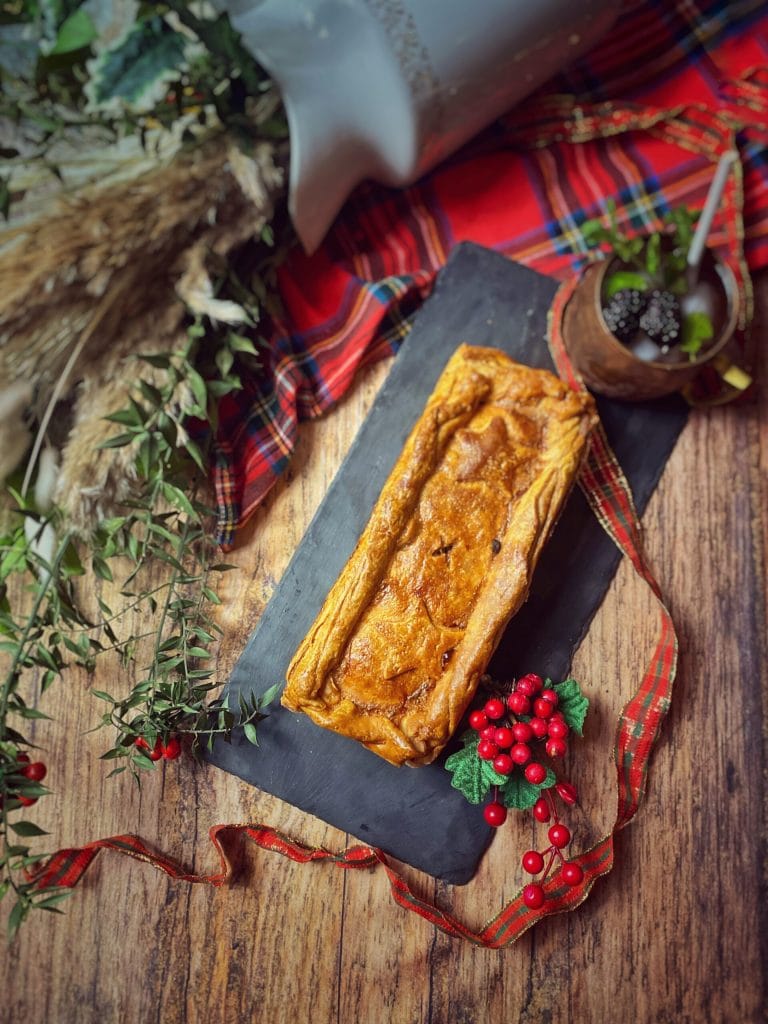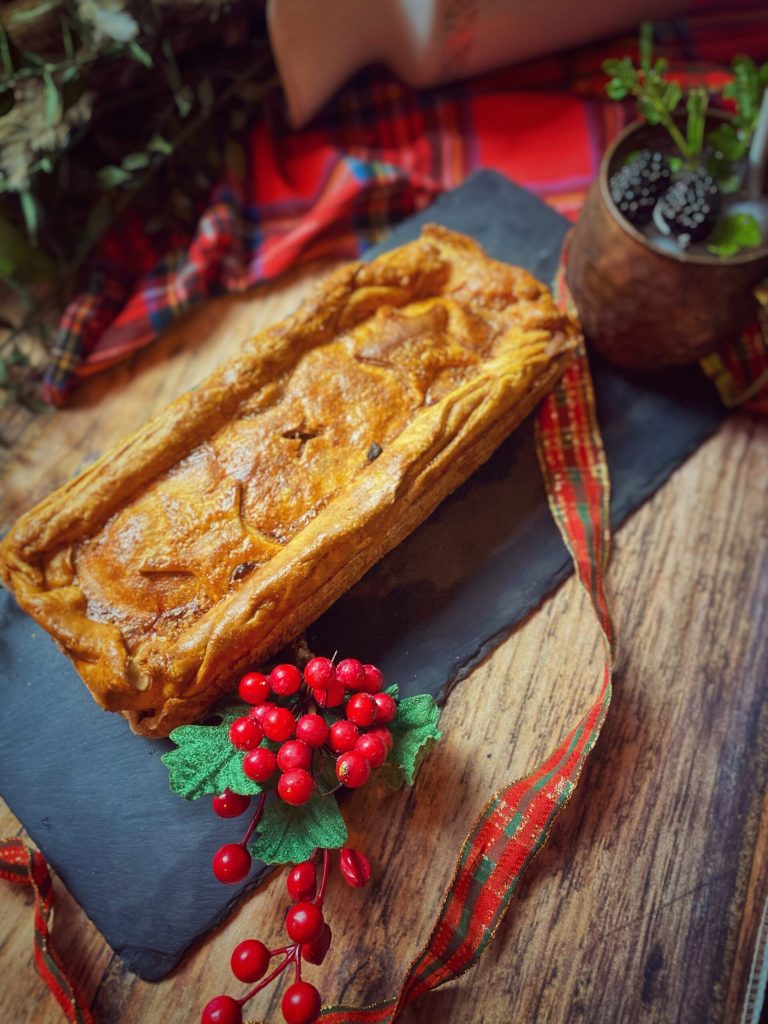The Black bun, sometimes also called Scotch bun, is a type of fruit cake.
Completely covered in pastry, it is of Scottish origin, and was originally consumed during the Twelfth Night, which corresponds to the eve of the Epiphany and the end of the Twelve Days of Christmas, but is now enjoyed during Hogmanay.
The dough typically contains: raisins, currants, almonds, citrus zest, allspice, ginger, cinnamon, and black pepper.
It was introduced after the return of Mary Stuart, Queen of Scots, from France, and tradition had it that a bean was hidden in the cake: whoever found it became the King for the evening.
Its original use during the Twelfth Night ended with the Scottish Reformation, in 1560, when the celebration of Christmas was outlawed in Scotland.
It has been described as a much larger version of a Garibaldi biscuit and in itself is similar to a Christmas Cake or a Christmas pudding in dough within a pastry similar to shortcrust.

- Difficulty: Medium
- Cost: Medium
- Preparation time: 10 Minutes
- Portions: 10 Pieces
- Cooking methods: Oven
- Cuisine: Scottish
- Seasonality: New Year, Christmas
Ingredients
- 12.4 oz flour
- 6.3 oz butter
- 1/2 teaspoon baking powder
- 1 egg
- 1 pinch salt
- 10.6 oz raisins
- 7.8 oz currants
- 2.8 oz almonds
- 3.5 oz citrus zest
- to taste allspice
- to taste ground ginger
- to taste ground cinnamon
- to taste black pepper
- 7 oz flour
- 3.5 oz sugar
- 2 tablespoons Scottish whisky (or Brandy)
- 2 tablespoons milk
Tools
- 1 Loaf pan 22 x 12
Steps
Prepare the dough by combining the ingredients with 5 tablespoons of water.
Let it rest in the refrigerator while preparing the filling.
Mix together the flour, ginger, cinnamon, allspice, cinnamon, black pepper. Then, add the sugar and mix again to combine.
Add the raisins, currants, mixed peel, and almonds. Mix together with a wooden spoon. Add the brandy, or whisky, and the milk and mix until you get a well-combined and sticky fruit mixture.
Roll out the dough and cut two strips. Line the 22×12 loaf pan with one, insert the filling, and cover with the other dough.
Use a sharp knife to trim off excess pastry and finish the edges. Roll the remaining pastry into a ball and set aside.
Brush the edges with beaten egg.
Cover with the other dough. Brush the surface with more beaten egg.
Decorate as desired with the leftover pastry set aside.
Score a small cross on top.
Bake in the oven at 356°F for 2 hours.

The advice is to enjoy the Black Bun with the cocktail “Driade”, which you can find in the book “Aromatiche da bere” by Ottavia Castellaro.
FAQ (Questions and Answers)
Why did the Black Bun become the symbol of Hogmanay?
After the Scottish Reformation, winter holidays were moved to New Year’s in Presbyterian Scotland, so the cake was commonly incorporated into New Year’s celebrations after Hogmanay, where people traditionally visit their neighbors after midnight to celebrate the New Year.
This is called first-foot, and the gift of a black bun was intended to symbolize that the receiving family would not go hungry in the coming year.
Typically, celebrations begin on December 31st and continue into the morning of January 1st, Ne’erday, or sometimes until January 2nd.
It was also used as a traditional cake to serve to those visiting homes as part of Hogmanay, to be consumed with whisky.What is Hogmanay?
The origins of the Hogmanay holiday go back to the Vikings, who celebrated the winter solstice with wild parties to mark the last day of the old year.
Nowadays, Hogmanay is celebrated on the night of December 31st, New Year’s Eve, and into the following morning, New Year’s Day. Celebrations can often continue until January 2nd, a Scottish public holiday.
The First Foot is related to the first person to cross the threshold of a house after midnight on New Year’s Day.
So it is often part of a Hogmanay party/celebration at someone’s home.
The first footer must not have crossed that threshold before midnight, meaning they must be a completely new visitor to your home.
It can also be someone, often a dark-haired man, who left your house before midnight on New Year’s Eve and has not crossed the threshold until after midnight.
Gifts are usually given as a wish of good luck for the coming year: money, bread, or Black Bun, coal, or peat, are said to bring wealth, absence of need, and warmth.

